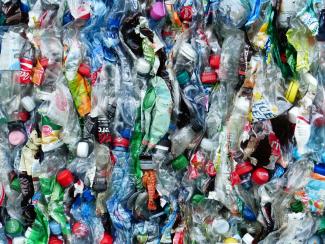Global plastics production doubled over the last two decades, and is predicted to double again in the next two decades. Increased production has led to increased waste. Ocean plastics pollution is rising, and the ocean will likely contain more plastics mass than fish by 2050.

In addition to direct pollution, plastic production and incineration of waste plastics produce significant greenhouse gas emissions. By 2050, plastics will likely account for 15% of the global annual carbon budget. The disruption of plastics recycling by China’s import restrictions and the coronavirus pandemic have further exacerbated the plastics problem.
In this month’s issue of ELR—The Environmental Law Reporter, Ruth Jebe discusses the U.S. plastics problem, arguing for a new paradigm that considers plastics from a sustainability perspective. The Article examines plastics’ issues through the whole product life cycle, laying the groundwork for a comprehensive, circular regulatory regime.
Jebe investigates issues stemming from the current linear focus of plastics production, including product design that ignores materials’ life cycle and technical limitations to recycling. She points to the disjointed nature of the U.S. plastics regulatory scheme, as well as market challenges that undercut the economic viability of recycling.
The Article then identifies possible regulatory interventions to reduce plastic pollution and promote circularity. Jebe describes source reduction regulation, such as bans on traditional plastics; argues for developing new bioplastics materials via R&D and federal subsidies; and points to federal environmental law as another viable mechanism. Recently introduced federal legislation, the Break Free From Plastic Pollution Act, proposes revising federal environmental laws to require plastics production to utilize zero-emission energy sources.
According to Jebe, mandating that producers employ “design-for-the-environment” principles would disincentivize single-use design. Under the Break Free Act, for instance, the EPA would require producers to minimize environmental impacts across the whole value chain. Regulation can further facilitate a circularity model by supporting after-use markets and shifting responsibility to producers through takeback legislation.
Lastly, Jebe outlines a future research agenda oriented toward a circular approach to plastic pollution. Expanded regulatory schemes, she concludes, are necessary to support systemic change, and only by embracing circularity can we solve our plastics problem.
ELI is making this featured ELR article available free for download. To access all that ELR has to offer, including the full content of ELR—The Environmental Law Reporter and its archive, you must have a subscription.
To learn more, visit www.elr.info.
